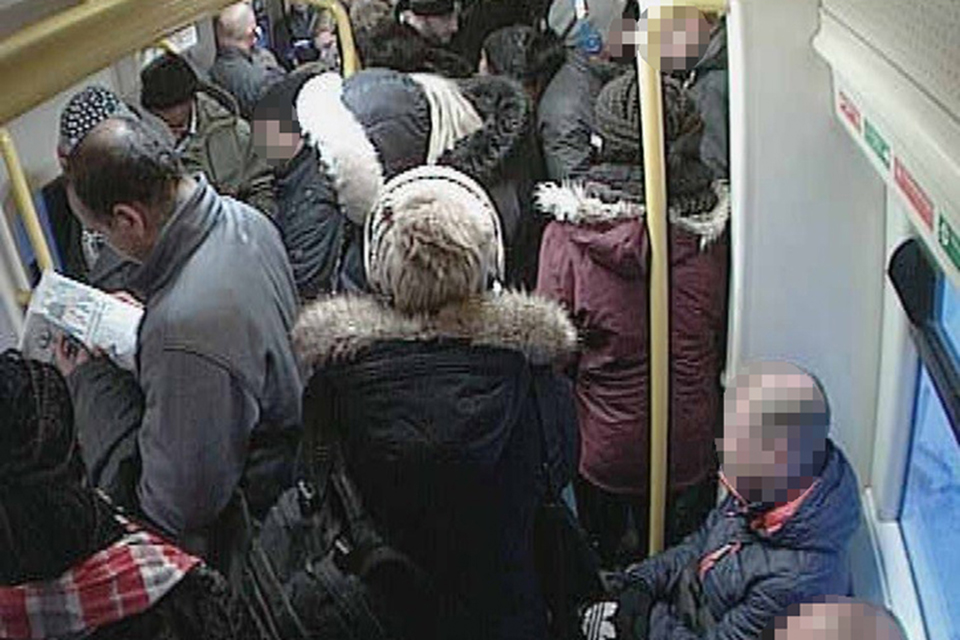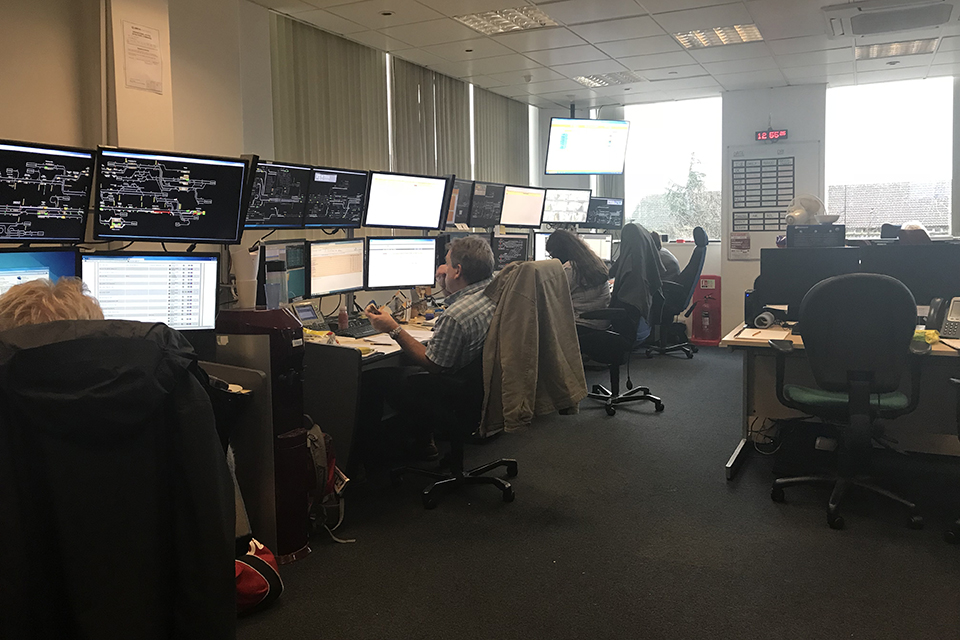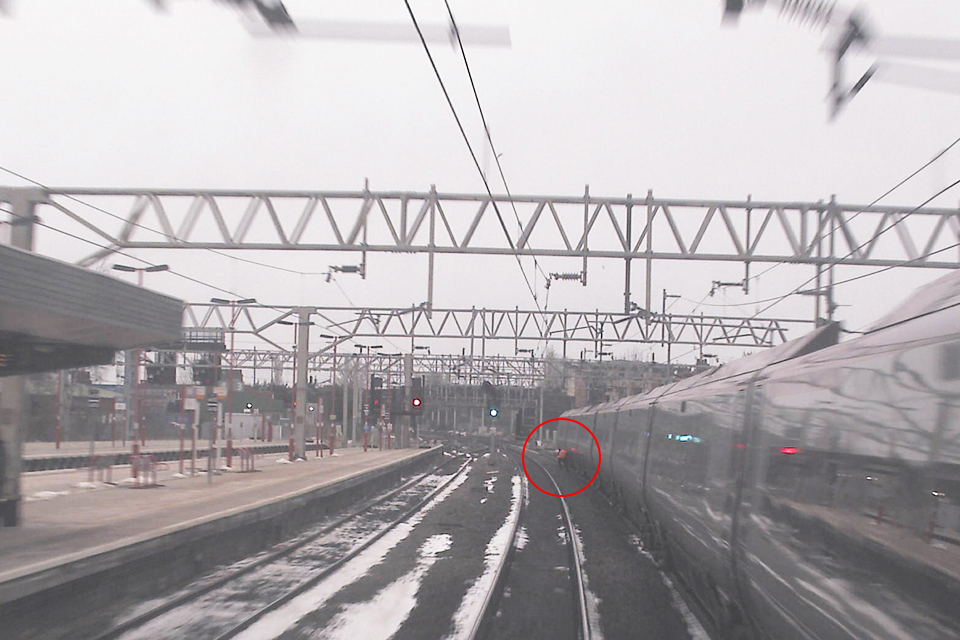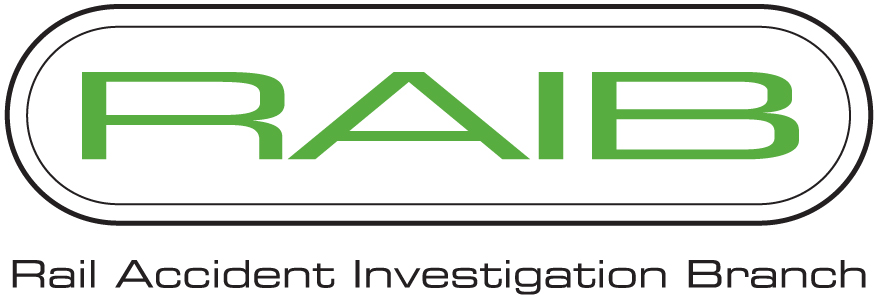Summary of learning - 4. The safe management of abnormal train-operating events which put passengers and crews at risk - v2. May 2025
Published 2 April 2020
1. Purpose of this summary
The purpose of this document is to provide a repository of some of the most important areas of learning identified in RAIB’s investigations to date, cross-referenced to relevant reports. It therefore provides a reference source for those looking to understand real-world railway safety issues and potential control measures.
When preparing this document, RAIB has selected those issues which:
- have recurred in different RAIB investigations
- have still to be fully addressed
- could be a factor in the cause of a fatal accident
RAIB is aware that many of the issues raised have already been the subject of actions by duty holders when responding to RAIB recommendations or are in the process of being addressed. The inclusion of a topic in this document should not be taken to mean that no action has been taken in response to relevant recommendations. However, its inclusion indicates that RAIB is of the view that the issue still needs to be actively managed by duty holders.
The current status of each recommendation made by RAIB can be checked by reference to the Index of RAIB recommendations, and details of the actions taken are published by ORR.
It is not the purpose of this document to quantify the risk associated with each of the identified safety issues. Readers seeking to understand the overall risk of harm associated with various dangerous events should refer to RSSB’s Annual Safety Performance Report. This presents historical information on actual harm caused, and estimates of risk based on extensive modelling.
2. Overview
Minor technical faults on trains are a daily reality on the railways, but sometimes these minor events, if not identified and dealt with effectively, can develop into a potential safety incident. If such an incident results in serious risk to passengers or train crew, and there is the potential for important safety learning, RAIB will investigate.
When trains stop between stations, passengers can understandably become worried or impatient. The conditions experienced by passengers can also deteriorate on trains which lose their power supply, for whatever reason. Reduction of lighting, toilets which no longer function, and the loss of air conditioning in a sealed train can all create an extremely unpleasant environment, particularly in hot weather.
In some cases, people may decide to make their own way out of the train. In doing so, they potentially put themselves at risk from moving trains, electrical power supplies and hazards such as slips and trips. Passengers leaving trains in an uncontrolled way will often cause other trains to be stopped, and electrical power to be turned off, until the tracks are confirmed to be clear. This will extend the delay, which may spread to other trains and passengers.
Trains becoming stranded close to stations, or in town and city environments, can further increase the risk of passengers self-evacuating, particularly as they may see an opportunity to complete their journey by other means.
Dealing with these situations can be very challenging for train crew, as they may have technical tasks to perform as well as responding to the needs of the passengers. There can be particular issues on local and suburban trains which do not have toilet facilities, and may also be very crowded with standing passengers, making it difficult for train crew to pass through.
It is therefore vital that proper support is available for staff when trains develop faults or become stranded, and that there are suitable, up-to-date and adequately rehearsed plans in existence for recovering the situation.
3. Important areas for safety learning
The main topics of concern to RAIB are described below.
3.1 Support for train drivers during incidents
Train drivers only very rarely encounter incidents in which their trains fail and become stranded, so they may find that a lack of relevant experience makes dealing with these events challenging. They may also be the only member of staff on the train, meaning that the responsibility for fault-finding, liaison with signallers and control room staff and keeping passengers informed will fall to them. It can be difficult to keep a cool head and to make effective decisions when dealing with the pressures that such situations can bring.
During its investigations at Kentish Town in 2011 (report 07/2012), Peckham Rye in 2017 (report 16/2018), and Styal in 2023 (report 07/2024), RAIB found that the drivers involved were sometimes not appropriately supported by their employer’s control room, and then could become overwhelmed by events. We have recommended improved support for drivers when dealing with out-of-course events such as signals passed at danger (SPADs) and train failures.

Commuters in one of the trains that became trapped near Lewisham.
Signallers and operations controllers may also have limited experience of stranding incidents and be unprepared to deal with them when they happen. RAIB found this to be the case in the incidents at Peckham Rye in 2017 (report 16/2018) and Lewisham in 2018 (report 02/2019). This underlines the need for railway companies to undertake planning, training and simulation or practical exercises, to enable staff to effectively manage incidents where one or more trains are stranded.
3.2 Recognition of developing incidents
The time taken to recognise that a situation is escalating is sometimes too long. The expectation that a train will be able to move in a few moments can lead to a decision to intervene being delayed until it is overtaken by events, such as passengers self-evacuating. This was a finding of RAIB’s investigation into the self-detrainment of passengers at Lewisham in 2018 (report 01/2019).

The control room of a train operating company.
There are also occasions where passengers can perceive a risk to their own safety and take action to leave a train in a potentially dangerous way, particularly in the absence of clear information or visible actions by staff. This was the case during the events at Holland Park (report 16/2014) and Clapham Common (report 03/2024).
RAIB has found that there is a need to help operating staff recognise when an incident is escalating and potentially becoming a risk to safety, and where decisive action is needed. It is vital that staff have the training and skills to be able to manage such situations before they get worse.
3.3 Communications during incidents
There must be clear safety-critical voice communications during incidents, which should follow from embedded practice within the industry. However, several RAIB investigations have found that communications are often not adequate to convey the right information and enable effective decisions to be made.
At Bethnal Green in 2018 (safety digest 04/2018), RAIB found that poor communications resulted in a misunderstanding which in turn led to a driver moving a train without the signaller’s permission. At Stafford in 2018 (safety digest 03/2018), confusion arising from poor communications resulted in a near miss between a train travelling at 85 mph (137 km/h) and a train driver who was on the track examining their train. Another example of a driver nearly being struck while examining their train due to a lack of clear communication occurred near to Nottingham station in 2024 (safety digest 03/2024).
At North Pole Junction in 2019 (safety digest 09/2019), the standard of communication was poor and messages were not passed correctly, leading to delays in decision-making and finally to passengers self-evacuating from a train in which conditions had become extremely hot and unpleasant.

The near miss at Stafford.
There may be more than one train operator involved when multiple trains are stranded by bad weather or power failure. In circumstances in which train faults have occurred, as at Peckham Rye in 2017 (report 16/2018), RAIB has found poor communication across the operational interfaces which exist between different train operating companies, signallers and control offices.
As well as communications between staff, the incident at Peckham Rye illustrates the need for regular communications with passengers as a situation develops, to inform people about what has happened and advise them about safe behaviour and what is being done to resolve matters. The events at Holland Park (report 16/2014) and Clapham Common (report 03/2024), where passengers believed they were in danger and became increasingly alarmed when no passenger information announcements were made, also underline the need for effective and regular communications during such incidents.
4. Relevant RAIB publications
- Safety incident between Dock Junction and Kentish Town (report 07/2012)
- Uncontrolled evacuation of a train at Holland Park station ([report 16/2014)[https://www.gov.uk/raib-reports/uncontrolled-evacuation-of-a-london-underground-train-at-holland-park-station]))
- Near miss with a train driver at Stafford (safety digest 03/2018)
- Operational incident following a signal passed at danger, Bethnal Green (safety digest 04/2018)
- Detrainment of passengers onto electrically live track near Peckham Rye station (report 16/2018)
- Self-detrainment of passengers onto live operational track at Lewisham (report 02/2019)
- Passengers self-evacuating at North Pole Junction (safety digest 09/2019)
- Uncontrolled evacuation of a partially platformed train at Clapham Common London Underground station (report 03/2024)
- Passengers self-evacuating at North Pole Junction (safety digest 09/2019)
- Near miss near Nottingham station (safety digest 03/2024)
- Unsafe movement of a train at Styal station (report 07/2024)

